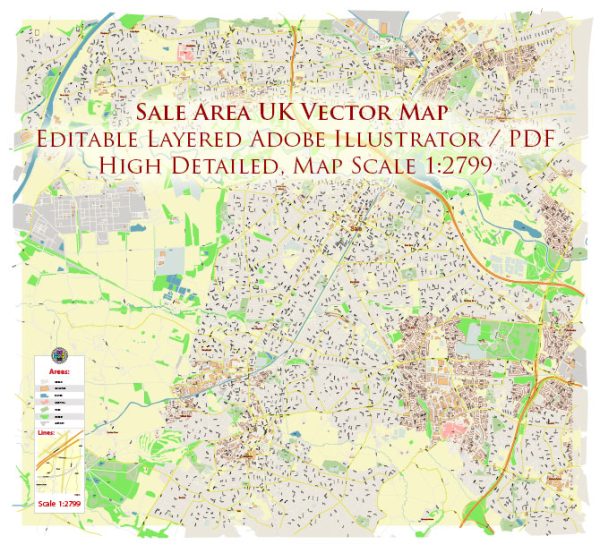Sale is a town in the Metropolitan Borough of Trafford, Greater Manchester, England, and it has a rich history of urban development. Here’s a brief overview:
- Early History: Sale’s history dates back to the medieval period, and it is mentioned in the Domesday Book of 1086. The area was primarily agricultural, with a few small hamlets.
- Industrial Revolution: Like many towns in the Greater Manchester area, Sale experienced significant changes during the Industrial Revolution. The construction of the Bridgewater Canal in the 18th century facilitated transportation of goods and stimulated economic growth.
- Urbanization: The expansion of Manchester during the 19th century led to the urbanization of nearby areas, including Sale. Improved transport links, such as the arrival of the railway in the mid-19th century, further connected Sale to Manchester and other industrial centers.
- Victorian Architecture: The Victorian era saw the development of Sale’s distinctive architecture. Many Victorian-style houses and buildings were constructed during this period, contributing to the town’s character.
- Suburban Growth: In the early to mid-20th century, Sale experienced suburban growth. The demand for housing increased, and the town expanded to accommodate a growing population.
- Post-War Development: After World War II, there was a need for post-war reconstruction and housing. Sale, like many other towns in the UK, underwent significant redevelopment during the mid-20th century.
- Retail and Commercial Development: Sale has a thriving commercial center with a mix of shops, restaurants, and businesses. Over the years, the town has seen the development of shopping centers and commercial areas to meet the needs of its residents.
- Transportation Infrastructure: Sale’s transportation infrastructure has evolved, with improvements to roads and public transportation. This includes the integration of the Metrolink tram system, providing convenient access to Manchester and other parts of Greater Manchester.
- Cultural and Recreational Spaces: Sale boasts various cultural and recreational amenities, including parks, theaters, and sports facilities. These contribute to the overall quality of life in the town.
- Conservation and Preservation: Efforts have been made to preserve Sale’s historical buildings and landmarks. Conservation initiatives aim to protect the town’s architectural heritage and maintain its unique identity.
Sale’s history of urban development reflects the broader trends seen in many towns and cities in the Greater Manchester area, shaped by industrialization, suburbanization, and the changing needs of its residents over time.


 Author: Kirill Shrayber, Ph.D.
Author: Kirill Shrayber, Ph.D.